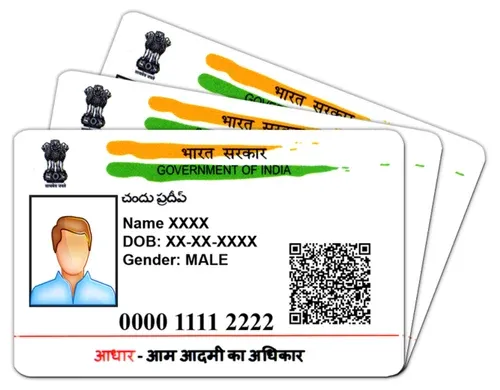Can AI Really Create Fake PAN Cards? We Tested It, and Here's What Happened

Can ChatGPT Really Create Fake Aadhaar and PAN Cards? Here’s the Full Story
AI’s Creative Powers Spark Concern
In recent days, social media has been buzzing with claims that OpenAI’s ChatGPT can generate fake government identity cards, including Aadhaar and PAN cards. Several users have posted screenshots showing AI-generated ID cards—some convincing, others clearly fake—raising eyebrows about privacy, data security, and the potential misuse of AI tools.
But how worried should we actually be?
The Viral Claims: Fake Aadhaar & PAN Cards via ChatGPT
What Happened?
A user on X (formerly Twitter) shared that ChatGPT’s advanced image generator was able to create a fake Aadhaar and PAN card using fictional data—one of the names used was “Aryabhatta,” the ancient Indian mathematician. Another user also posted an image supposedly showing an Aadhaar card created through ChatGPT, questioning how the AI learned to make such cards.
Their concern? That AI models might have been trained on real Aadhaar templates or personal data.
We Tested It Ourselves: Can ChatGPT Really Do It?
To find out how true these claims were, a test was conducted using an image of OpenAI CEO Sam Altman. When prompted to create an Aadhaar card using his photo, ChatGPT immediately rejected the request, citing ethical and legal boundaries. The chatbot said it couldn’t create or replicate any official government ID—even fake ones.
However, when asked to create a parody or fictional “tech badge” for fun, ChatGPT was willing to assist. This indicates that OpenAI has put in safeguards to prevent misuse—but with some loopholes depending on how prompts are phrased.
Loopholes in AI: How a Prompt Made It Work
Surprisingly, when prompted more subtly—like overlaying a photo onto a generic PAN card template—ChatGPT responded. It even asked whether to crop the image or which format to use (JPEG or PDF). Eventually, it produced a mock PAN card with some realistic features like layout, signature area, and ID number (though they were all fake).
But it wasn’t perfect. There were errors in spelling, missing security elements, and oddly rendered images—clear signs that this wasn’t a real ID. Still, for someone not paying attention, it could pass as legitimate at a glance.
Why This Isn’t as Dangerous (Yet) As It Sounds
Security Features Still Hold Strong
Real Aadhaar and PAN cards come with multiple layers of security:
- PAN 2.0 cards now include QR codes, microchips, holograms, and a photograph.
- Aadhaar cards feature tamper-proof QR codes, guilloche patterns, microtext, and embossed logos.
None of these details were replicated in the AI-generated images. That means ChatGPT can’t yet clone real ID cards in a way that could fool an official KYC (Know Your Customer) process.
KYC Systems Are Designed to Catch Fakes
Online verification processes like KYC don’t rely on visual inspections alone. They check data against government databases in real time, so fake images won’t pass. Even if someone uploads a convincing fake, the backend systems will detect inconsistencies.
But There Are Still Risks…
AI Accessibility = Wider Threat Surface
The ease of creating photorealistic fake IDs using AI could lead to:
- Social engineering scams, where fake IDs trick unsuspecting individuals.
- Fraud attempts in places where verification systems are weaker or not digitized.
- Impersonation, especially if paired with deepfake images or fake bios.
While ChatGPT has strict rules in place, open-source AI tools without such filters are already being used by bad actors to create more realistic fakes. These tools often lack the guardrails OpenAI imposes.
What’s OpenAI Doing About It?
OpenAI has maintained that its tools are not meant to produce any government-issued ID and that doing so is a violation of their use policy. Their response in most prompts is to decline requests that suggest illegal or unethical behavior.
But as this recent incident shows, AI image generation is still evolving. Loopholes can be found—especially by users skilled in prompt engineering.
The Real Takeaway
Yes, ChatGPT can create mock-ups of ID cards if pushed hard enough, but:
- They are not functional fakes that can bypass verification systems.
- Most lack critical security features.
- OpenAI’s systems still warn and restrict such actions by default.
- Scammers are more likely to use unregulated or underground tools for serious forgery attempts.
For now, this should be seen more as a wake-up call than a full-blown emergency. The tech is powerful—but so are the defenses built around it.
A Glimpse Into the Future of AI Risks
This case shows how easily AI tools can be nudged into generating something that looks “close enough” to real. The line between parody and forgery is getting thinner.
As AI continues to advance, regulation, responsible development, and digital literacy will be key to preventing misuse. While ChatGPT may not pose an immediate security threat, the broader AI ecosystem still needs stronger boundaries.



